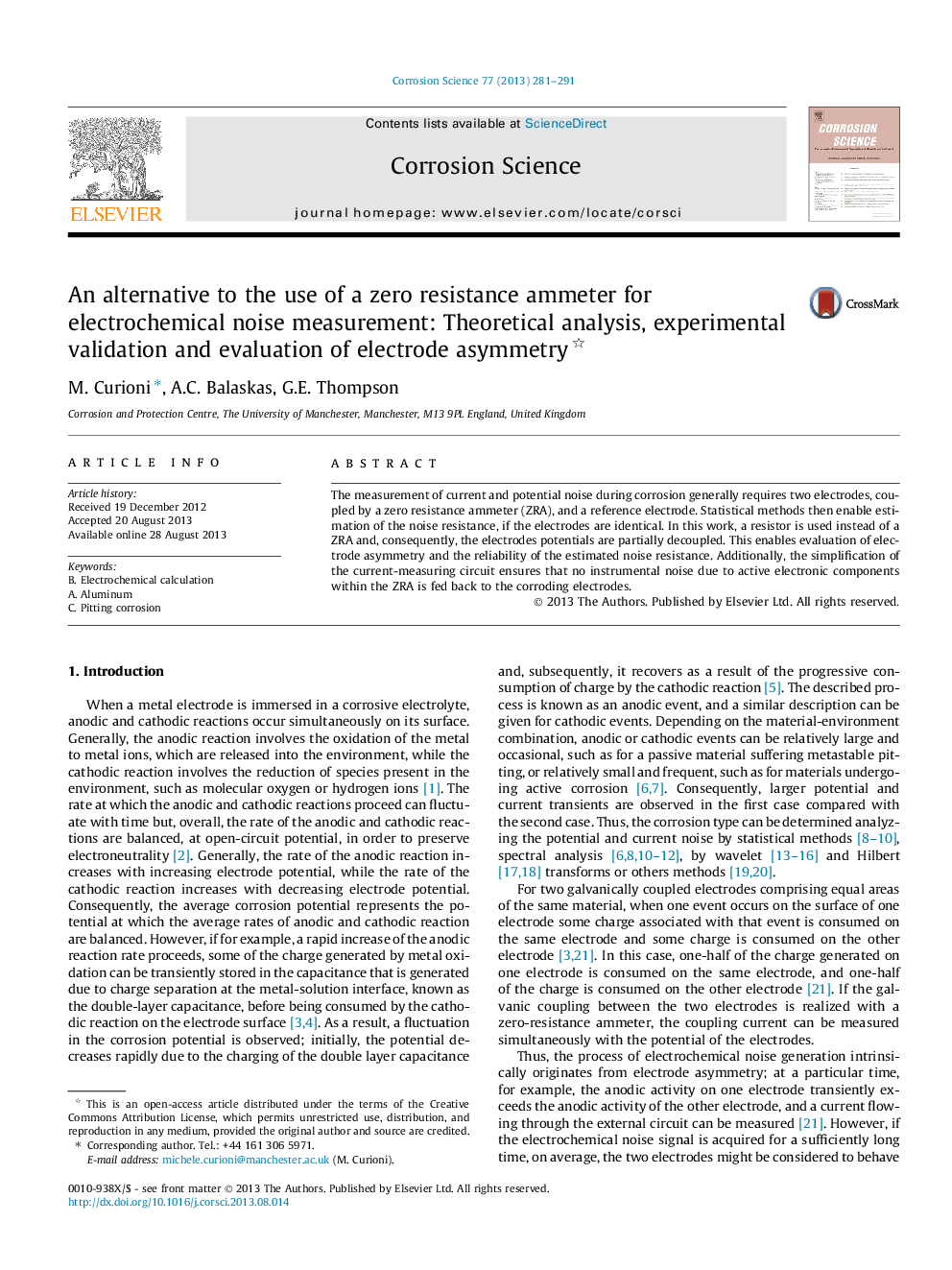| Article ID | Journal | Published Year | Pages | File Type |
|---|---|---|---|---|
| 7896270 | Corrosion Science | 2013 | 11 Pages |
Abstract
The measurement of current and potential noise during corrosion generally requires two electrodes, coupled by a zero resistance ammeter (ZRA), and a reference electrode. Statistical methods then enable estimation of the noise resistance, if the electrodes are identical. In this work, a resistor is used instead of a ZRA and, consequently, the electrodes potentials are partially decoupled. This enables evaluation of electrode asymmetry and the reliability of the estimated noise resistance. Additionally, the simplification of the current-measuring circuit ensures that no instrumental noise due to active electronic components within the ZRA is fed back to the corroding electrodes.
Related Topics
Physical Sciences and Engineering
Materials Science
Ceramics and Composites
Authors
M. Curioni, A.C. Balaskas, G.E. Thompson,
